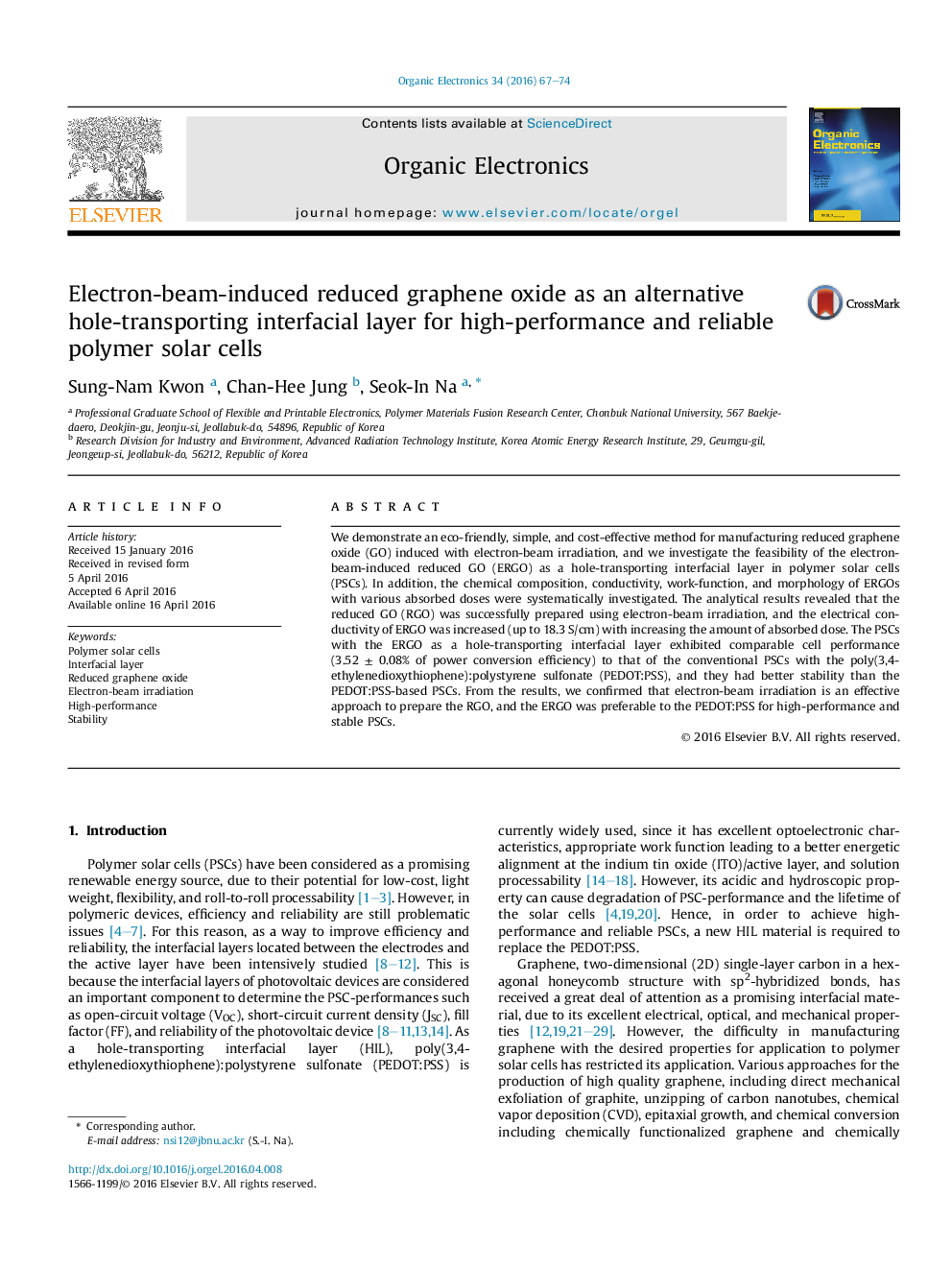| کد مقاله | کد نشریه | سال انتشار | مقاله انگلیسی | نسخه تمام متن |
|---|---|---|---|---|
| 1266900 | 1496823 | 2016 | 8 صفحه PDF | دانلود رایگان |
• Electron-beam-induced reduced GO (ERGO) was manufactured.
• The ERGO was applied to the polymer solar cells (PSCs) as an interfacial layer.
• The ERGO was preferable to the PEDOT:PSS for high-performance and stable PSCs.
We demonstrate an eco-friendly, simple, and cost-effective method for manufacturing reduced graphene oxide (GO) induced with electron-beam irradiation, and we investigate the feasibility of the electron-beam-induced reduced GO (ERGO) as a hole-transporting interfacial layer in polymer solar cells (PSCs). In addition, the chemical composition, conductivity, work-function, and morphology of ERGOs with various absorbed doses were systematically investigated. The analytical results revealed that the reduced GO (RGO) was successfully prepared using electron-beam irradiation, and the electrical conductivity of ERGO was increased (up to 18.3 S/cm) with increasing the amount of absorbed dose. The PSCs with the ERGO as a hole-transporting interfacial layer exhibited comparable cell performance (3.52 ± 0.08% of power conversion efficiency) to that of the conventional PSCs with the poly(3,4-ethylenedioxythiophene):polystyrene sulfonate (PEDOT:PSS), and they had better stability than the PEDOT:PSS-based PSCs. From the results, we confirmed that electron-beam irradiation is an effective approach to prepare the RGO, and the ERGO was preferable to the PEDOT:PSS for high-performance and stable PSCs.
Figure optionsDownload as PowerPoint slide
Journal: Organic Electronics - Volume 34, July 2016, Pages 67–74
